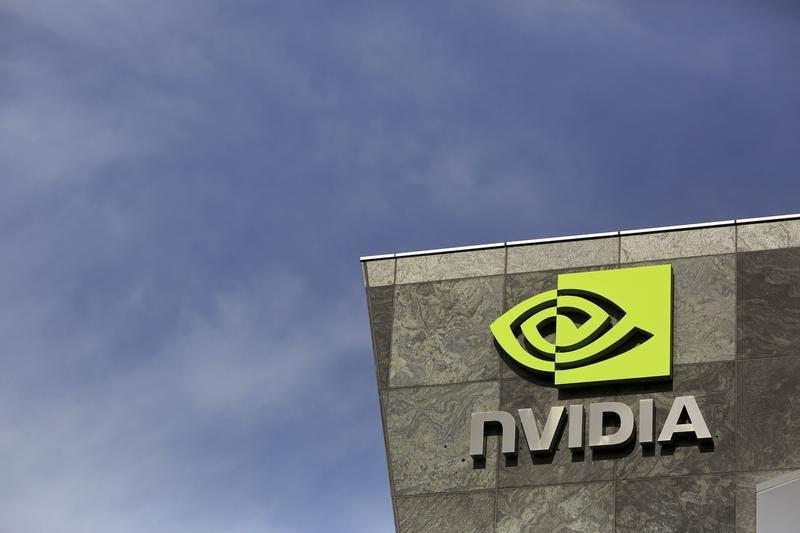Two 59%+ winners, four above 25% in Aug – How this AI model keeps picking winners
SANTA CLARA, CA – NVIDIA Corporation (NASDAQ:NVDA), currently valued at $2.75 trillion, has announced the adoption of a new Variable Compensation Plan for Fiscal Year 2026, which links executive pay to the achievement of specific corporate performance targets. The plan, adopted by the company’s Compensation Committee on March 3, 2025, offers eligible executive officers the potential to earn cash payments based on NVIDIA’s fiscal year 2026 revenue performance. The company’s strong financial position is evidenced by its perfect Piotroski Score of 9, according to InvestingPro data, which indicates excellent operational efficiency and financial stability.
Under the 2026 Plan, the performance goals are set with threshold, base, and stretch levels of compensation. To qualify for an award, participants generally must remain employed through the payment date. This performance-based approach aligns with NVIDIA’s impressive track record, having achieved 114.2% revenue growth in the last twelve months.
The target award opportunities for base compensation plan achievement are set as a percentage of each named executive officer’s fiscal year 2026 base salary. For instance, President and CEO Jen-Hsun Huang has a target award opportunity of $3 million, which is 200% of his base salary. Executive Vice President and CFO Colette M. Kress’s target stands at $300,000 or 33% of her base salary.
Other named executive officers, including Ajay K. Puri, Debora Shoquist, and Timothy S. Teter, have target award opportunities that range from 29% to 68% of their respective base salaries.
The 2026 Plan is detailed in an 8-K filing with the Securities and Exchange Commission and is designed to align the interests of NVIDIA’s executives with those of its shareholders by tying a significant portion of compensation to the company’s financial success.
The adoption of this performance-based compensation plan comes as part of NVIDIA’s broader strategy to maintain competitiveness and incentivize top-level management. As per the filing, the full details of the Variable Compensation Plan for Fiscal Year 2026 are included as Exhibit 10.1.
This move reflects NVIDIA’s commitment to corporate governance practices that closely link executive compensation with company performance, a principle that is increasingly valued by investors and stakeholders in the market. With a return on equity of 119% and an overall financial health score of "GREAT" according to InvestingPro, NVIDIA demonstrates strong fundamental performance. For investors seeking deeper insights, InvestingPro offers comprehensive analysis with over 20 additional ProTips and a detailed Pro Research Report, available among 1,400+ top US stocks covered by the platform.
In other recent news, Nvidia has been in the spotlight following Broadcom (NASDAQ:AVGO)’s optimistic forecast, which has positively influenced investor sentiment regarding AI computing. Broadcom reported first-quarter adjusted earnings per share of $1.60, surpassing the average analyst estimate of $1.50, and its adjusted net revenue of $14.92 billion also exceeded expectations. Meanwhile, Nvidia’s plans to invest in approximately 370,000 CoWoS wafers at TSMC in 2025 remain largely unchanged, according to analyst Ming-Chi Kuo from TF International Securities. Contrary to market rumors of a reduction, Kuo confirmed that Nvidia’s production plan remains stable, dispelling concerns of a decrease from over 400,000 wafers.
Foxconn (SS:601138), a key supplier for Nvidia, reported a 25% revenue increase in the first two months of 2025, driven by demand for AI computing. This growth rate is a significant acceleration from the previous year’s 11% growth. Citi analysts have maintained a Buy rating on Nvidia, with a price target of $163, despite a 13% decline in the stock following recent earnings. The firm remains confident in Nvidia’s potential, despite macroeconomic challenges such as tariffs and restrictions in China.
Tesla (NASDAQ:TSLA) has also been making headlines with a 3.1% rise in premarket trading, following a 21% increase in new car registrations in the UK for February. This comes amid declining sales in Europe and China, with further insights expected from upcoming German registration figures. These developments underscore the dynamic landscape for companies within the Magnificent Seven stocks, highlighting ongoing shifts and investor considerations in the tech and automotive sectors.
This article was generated with the support of AI and reviewed by an editor. For more information see our T&C.
